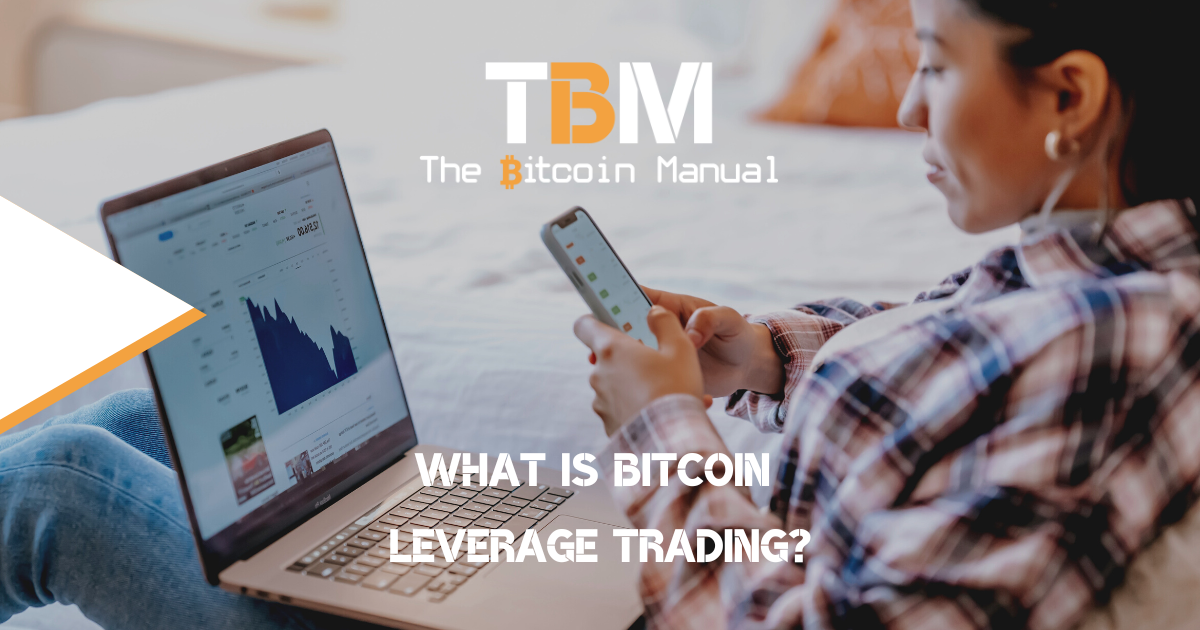Bitcoins’ number go up technology attracts many of us through the promise of future profits, but we stay for more than once you tumble down the rabbit hole. In the last 13 years, bitcoin hodling and dollar-cost-averaging have proven to be the better option. Many think they are smart enough to predict short-term trends and capital flows and make considerable profits.
Most traders do not beat the market, and even fewer leveraged traders survive, but it remains a widespread practice. Some learn their lesson; others prefer to return to try and make that one big bet, as green and short-term profits will always attract degen traders. As more traders enter the market, they’ll try their hand at a host of financial products that multiply risk in the promise of short-term profits.
What is leveraged bitcoin trading?
Leverage is the use of debt to purchase bitcoin being held as an overexposed investment. Leverage trading allows an investor to gain more risk to bitcoin’s price movement than they would’ve been able to afford if they had used only their available cash to place those trades.
Leverage increases the upside and downside of a position and the returns on an asset. This added volatility increases the risk that an investor faces depending on the amount of leverage taken; some exchanges can offer traders between 1.5 up to 100 times leverage on a trade.
| Advantages | Disadvantages |
| Greater profits | Greater losses |
| Diversification | High-Risk Trading |
| Trade with limited funds | Can lose capital quickly in volatile markets |
| Teaches discipline and risk management | Complex for new traders |
The cost of leverage
In addition to increased risk, an investor will also have to pay the lender for borrowing their money. Leverage is not free, and the longer you hold the trade, the more interest you need to pay on those borrowed funds.
Interest payments also need to be factored into your risk factor and how long you maintain your trades.
How does leverage work?
To give you a simple illustration, if an investor had $100 and one bitcoin $100, they could buy one share without using leverage. Alternatively, that investor could borrow $900 to use as leverage for a $1,000 total investment, or in this example; you would have borrowed 10 Bitcoin. The investor now has 10x leverage in their bitcoin investment.
When leverage goes your way
If the price of bitcoin increased by 10% to $110 each, the investor would hold $1,100 worth of bitcoin. After repaying their loan of $900, they would be left with $200, $100 of which is profit.
Due to leverage, the investor made a 100% return even though the underlying asset only increased by 10%, as opposed to making only a 10% return or $10 if they placed the same trade without leverage.
When leverage goes against you
Now that was the positive outcome of the trade; on the flip side if the same trade was placed but the price decreased, the investor is now underwater.
Using the same example, if the bitcoin price decreased to $90 per coin, the investor would only have $900 worth of shares. Since the investment is the collateral for the loan, the investment must be worth enough to pay back the loan. In this scenario, the investor would receive a margin call and be forced to sell all their coins to repay the loan, leaving them with a $100 loss.
Alternatively, the investor could keep their trade open by providing additional collateral, but now they are reducing their leverage but increasing their total value at risk.
What does it mean to be leveraged short?
In conversions regarding leverage, you may have heard the terms leveraged long or leveraged short. In the previous example above, when betting on the price movement going up, that would be a case of leveraging long.
Alternatively, you can bet against the price going down; this is known as leveraged short.
Let’s say you had $100 to trade and borrowed at 10x leverage, opening a $1000 short position on BTC. In this case, you will borrow BTC from someone else and sell it at the current market price. Your collateral is $100, but since you are trading on 10x leverage, you can sell $1 000 worth of BTC.
Assuming the current BTC price is $100 and the BTC price drops 10% (down to $90), you can buy back lower at $900 and return the funds you borrowed and make a $100 profit minus the fees.
However, if BTC rises, your position will be liquidated. To avoid being liquidated, you need to add more funds to your wallet to increase your collateral before the liquidation price is reached.
Why do investors use leverage?
Investors typically use leverage during bull markets when prices are on the rise with very few and shallow pullbacks; these market conditions attract investors who are extremely confident about capital flows and investment opportunities. Leverage allows investors to make a large profit very quickly if the price moves in their favour. A successful leveraged trade can give an investor a massive return in a brief period with relatively low capital requirements.
Leveraged investments typically ignore the long-term investment potential of the asset they are trading. Instead, they aim to capitalise on significant short-term events that will significantly impact price. For example, a company coming out with news that is bullish or bearish for the price of bitcoin and trading around the sentiment or event.
Finally, some companies that have enough capital to move markets in specific directions can take out leverage to maximise their returns.
How to manage risk with leveraged bitcoin trading?
Trading with high leverage requires less capital to start with, but that adds to your chances of liquidation. If your leverage is too high, even a 1% price movement could lead to huge losses. The higher the leverage, the smaller your volatility tolerance will be. Using lower leverage gives you more margin of error to trade or when markets go against you.
When using leverage, traders need to consider risk management strategies like stop-loss and take-profit orders to help minimise losses which are highly likely when using borrowed funds to trade short term.
Stop-loss orders
You can use stop-loss orders to automatically close your position at a specific price, which is helpful when the market moves against you. Stop-loss orders can protect you from significant losses.
Take profit orders
Take-profit orders are the opposite; they automatically close when your profits reach a particular value. This allows you to secure your earnings before the market condition turns.
How does leverage affect bitcoin markets?
Leverage is used relatively often by investors in Bitcoin markets since exchanges aren’t as regulated as stock market trading desks and the fact that you can trade 24/7 and every day. In addition, bitcoin exchanges offer leverage options unheard of in other markets, with up to 300 times leverage with certain exchanges.
When many investors hold leveraged investments in the same asset, it will exacerbate significant market moves, either going long or short. If the price goes down, many leveraged investors will receive margin calls simultaneously. This forces them to sell to close their position and pay back their debt. As they sell, the price goes down further, triggering additional margin calls for other traders.
This additional pressure can push markets down lower or higher than they otherwise would have swung without leverage.
Don’t use leverage with bitcoin.
The mistake many new traders make is thinking they’re too bright for the market and finding out they’re not, by getting their accounts wrecked, get taken off the playing field, bruised, and battered quickly.
If you’re taking on more risk, then leveraged trading shouldn’t be your only strategy; it should be part of various trades to hedge your risk. In most cases, traders should avoid using leverage.




